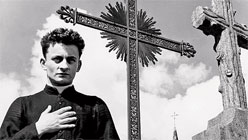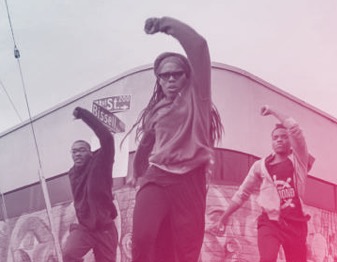There’s a funny bit in the press release for SFMoMA’s Henri Cartier-Bresson: The Modern Century show, wherein we’re advised that this vast retrospective “features some 300 prints from Cartier-Bresson’s professional career from 1929 to 1989, with an emphasis on the years 1932 to 1973.” Yes, the career spans six decades, but for emphasis they’ve narrowed the focus to, um, four decades.
That’s just how it goes with the progenitor of modern photojournalism, who took to heart a 17th-century clergyman’s proclamation that “there is nothing in this world that does not have a decisive moment,” and made it his modus operandi. He was almost defiantly wide-ranging.

Henri Cartier-Bresson, “Juvisy, France,” 1932.
Accordingly, The Modern Century does flit around, both chronologically and geographically. The native Frenchman shot his way through Europe, Africa, the Americas, India, China and the Soviet Union, and never seemed to be scurrying, merely readying. Even his most important pictures also seem insouciant. His timing was intuitive, but his composition rigorous. And we can see his emerging sensibility, made possible by portable equipment, Surrealist pals, and largely self-directed photojournalistic priorities. It became a style, a lifestyle. As one wall placard explains, “With a camera in his hand and a few rolls of film in his pocket, Cartier-Bresson never needed to decide if he was working or just living.” No wonder he was so influential.
In any case, he usually knew just what to do, at least photographically, be it with Gandhi’s funeral, ladies legs on a 1960 San Francisco sidewalk, or that one chance snap from Sardinia, in 1962, with nine darkly dressed men gathered on a grassy hill in just such a way as to resemble a Dutch master’s painting.



